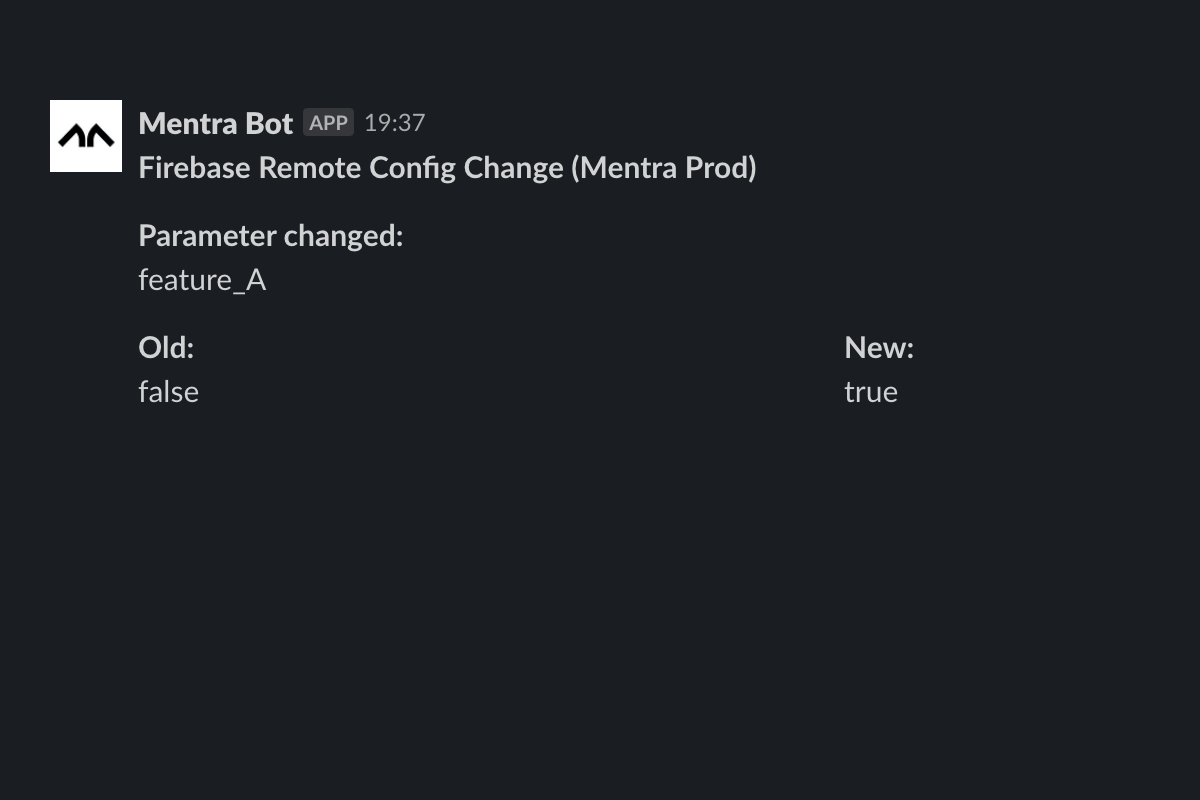
Firebase Remote Config Slack Notifications
By Anders Olsen Sandvik on
In the ever-evolving landscape of software development, the principles of DevOps have become paramount for teams striving to achieve efficiency, collaboration, and rapid deployment. DevOps, a fusion of development and operations practices, emphasizes automation, continuous integration, and continuous delivery (CI/CD) pipelines to streamline the software development lifecycle. However, as a seasoned developer with a decades of experience, I've come to realize that the key to successful DevOps lies not only in the tools we use but also in how effectively we communicate and collaborate as a team. Enter SlackOps—a paradigm that leverages Slack, the popular team communication tool, as a central hub for DevOps activities. Recently, I embarked on a project to enhance our DevOps workflow by integrating our feature toggle service, Firebase Remote Config with Slack. The goal was to enable seamless communication and real-time notifications whenever changes were made to feature toggles, allowing our team to stay informed and react promptly.
Understanding the Challenge
Firebase remote config provides a convenient way to manage feature flags and control feature rollout. However, tracking changes and ensuring all team members were aware of updates proved to be a manual and cumbersome process. This inefficiency led to delays in deployment and confusion among team members regarding the current state of feature toggles.
The Solution: Automating
Slack Notifications to address this challenge, I developed a script that monitors changes to feature toggles on Firebase and automatically posts notifications to a dedicated Slack channel I created. Here's how I approached the implementation:
- Firebase Realtime Database Listener: I utilized Firebase's Realtime Database listener to monitor changes to the feature toggle data in real-time. Whenever a toggle was added, updated, or removed, the listener triggered an event through the version metadata.
- Slack Webhooks Integration: Leveraging Slack's incoming webhooks, I set up a connection between Firebase and Slack. This allowed the script to send HTTP POST requests to the designated Slack channel, enabling the posting of notifications.
- Parsing and Formatting Messages: To ensure clarity and readability, I parsed the data received from Firebase and formatted the messages to include relevant information such as the name of the feature toggle, the type of change (added, updated, or removed), and the parameter value.
- Error Handling and Logging: I added some error handling mechanisms and logging to gracefully handle any exceptions or failures during the process.
See below for my example of the function I used.
Benefits and Impact
The integration of Firebase feature toggles with Slack proved to be an improvement for our DevOps or SlackOps workflow and team communication. By automating the notification process, we experienced several benefits:
- Real-time Visibility: Team members were instantly notified of any changes to feature toggles, ensuring everyone stayed updated on the current state of the application.
- Faster Reaction Time: With proactive notifications, our team could react swiftly to feature changes, accelerating the deployment process and reducing time-to-market.
- Improved Collaboration: Slack became a central hub for SlackOps activities, fostering collaboration and knowledge sharing among team members.
Future Enhancements and Considerations
While the initial implementation addressed our immediate needs, there are several avenues for future enhancements and optimizations:
- Fine-grained Notifications: Implementing more granular notification settings based on user roles or specific feature toggles to minimize noise and tailor notifications to individual preferences or seperate channels for different apps.
- Integration with CI/CD Pipelines: Exploring integration with our CI/CD pipelines to automate feature toggle management as part of our deployment process.
- Advanced Analytics: Leveraging Slack's API and Firebase analytics to gather insights into feature toggle usage and adoption, enabling data-driven decision-making.
Conclusion
In the dynamic landscape of DevOps, effective communication and collaboration are indispensable. By embracing the concept of SlackOps and integrating our feature toggle service with Slack, we've not only streamlined our DevOps workflow but also fostered a culture of transparency, agility, and teamwork. As we continue to evolve and innovate, I'm excited about the possibilities that SlackOps presents for enhancing our development processes and driving business outcomes. With the right tools, mindset, and collaboration, we can navigate the complexities of modern software development with confidence and success.
Link to gist with code. In the future I could try to embed the code here.